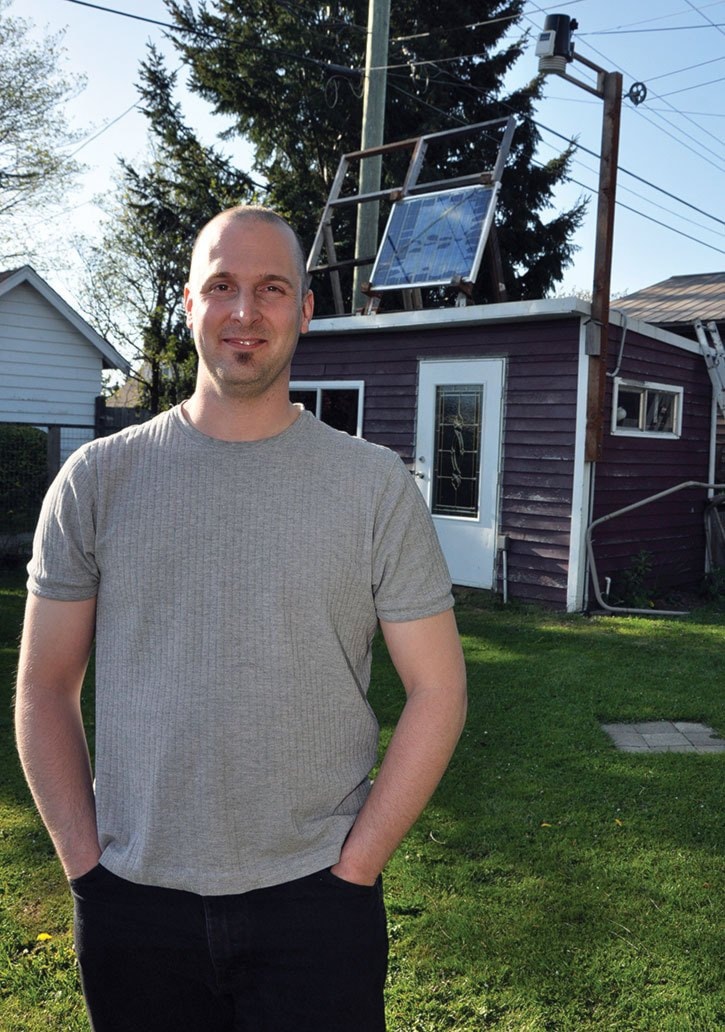Of all the major weather events to happen in the Alberni Valley in the past decade, the first to come to Chris Alemany’s mind is the storm of November 2006, which caused major flooding and high winds through the city.
Alemany, who has a weather station set up at his house, said at the time, he had recorded 115 km/hour winds.
“Our house literally shook from the winds; it was pretty memorable,” he said.
On April 18, residents came together at the Alberni Valley Museum to talk about the weather, following a presentation by Alemany, who built and maintains the alberniweather.ca website.
“We talked a bit about how cold it was in the past, skating on Loon Lake and other lakes around the Alberni Valley and how that doesn’t happen anymore,” Alemany said.
Using data from Environment Canada over the past century, Alemany presented average temperatures in the region, which have climbed anywhere from half a degree to two degrees in the past 100 years.
One of the most dramatic numbers, in Comox, shows the annual daily minimum temperature has risen from 4.8C in 1935 to 6.4C in 2011.
“That’s huge,” Alemany said.
Global warming was a topic for discussion during the presentation.
“It’s clearly happening and an issue,” Alemany said. “Just from going over so much weather for the weather website, I see a lot of recent research, and it’s not encouraging.”
It’s hard to specifically say, however, how global warming could affect the Alberni Valley.
“If anything, the biggest change we’re going to see in the valley, is that the jet stream is going to change our weather pattern,” he said.
“The only thing you can really be sure of is that temperatures are going to keep rising as long as C02 emissions keep rising.”
He added it’s interesting to note that April marks the 75th anniversary of the discovery of global warming, made by an amateur meteorologist, Guy Stewart Callendar.
“His hand drawn graphs showing warming still match very closely the warming we have measured today,” Alemany said. “His paper will probably go down in history as one of the most important ever published.”
As for the near future, Alemany said residents and especially farmers will want to take note of predicted dry weather for the next month.
“There’s been some long-term forecasts that show April and May are going to be fairly dry and hopefully warmer than normal,” he said.
With its position in a valley and different microclimates, the Alberni Valley presents an interesting subject for weather.
“We do really have a unique place because we’re on the inlet, which brings in a lot of weather right off the ocean – lots of rain and warm winds in the winter time – but then we get a lot of cold air that gets stuck in the Valley and we’re always colder than a lot of places. And in the summer we’re often hotter than everywhere else,” Alemany said.
Alemany created alberniweather.ca in 2005, in an effort to build a web page. The data collected from his home weather station feeds directly into the site and updates every minute.
Now, the computer tech by day, weatherman by night keeps a blog on the site, as well as other helpful features, such as the highway web cams for travelers.
“There are lots of late nights making sure it’s working, but for the most part, it pretty much runs itself,” he said.
“Everybody likes to talk about the weather –I’ve just taken it a little bit further.”
Information from the museum presentation will be uploaded to www.alberniweather.ca in the coming weeks.
* Niomi Pearson is a freelance journalist formerly of the Alberni Valley
